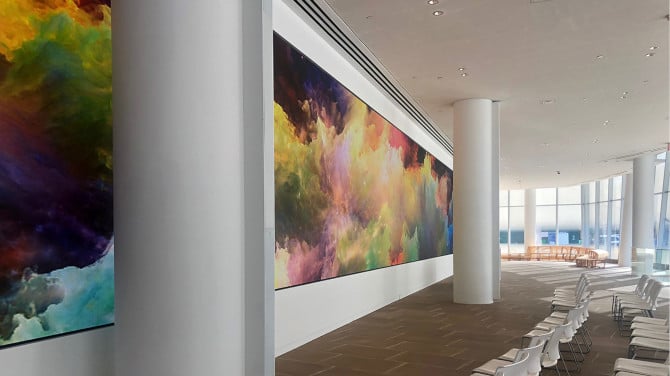Perfecting Hue Accuracy in LED Display Calibration for Breathtaking Graphic Displays
Perfecting Hue Accuracy in LED Display Calibration for Breathtaking Graphic Displays
Blog Article
Hue accuracy is essential for creating breathtaking visual presentations, particularly when employing LED screens. These massive screens are commonly found in locations like concert venues, sports arenas, and advertising billboards. When the colors on an LED wall are not correct, the visuals can look flat or distorted, which can affect the overall experience for viewers. Therefore, mastering color precision in LED screen tuning is crucial for attaining lively and realistic images.
The initial step in guaranteeing color accuracy is understanding how LED technology works. LEDs, or light-emitting diodes, produce light in various shades by combining red, green, and blue (RGB) light. Each pixel on an LED screen is made up of these three hues. When tuned properly, the mix of RGB can create a broad range of hues. However, if one hue is too intense or too dim, it can throw off the entire screen. This is why tuning is needed to balance the colors and reach the intended visual result.
Tuning entails adjusting the configurations of the LED screen to make sure that the colors shown correspond the original material as closely as feasible. This procedure usually includes using specific software and hardware tools. Technicians often use color assessment devices, such as spectrophotometers, to examine the hues being displayed. By contrasting the measured colors to benchmark color standards, they can make precise modifications. This ensures that the colors are not only lively but also consistent across the whole display.
Another important aspect of color precision is comprehending the environment in which the LED screen is employed. Factors such as surrounding light can considerably impact how colors look. For example, a well-lit lit room may wash out hues, making them look less lively. To counteract this, technicians may modify the brightness and differentiation settings of the LED screen. Additionally, they may choose particular color profiles that are more suited for various lighting environments. This adaptability helps preserve color accuracy regardless of the viewing surroundings.
Finally, regular upkeep and recalibration are crucial for keeping an LED wall looking its finest. Over time, the functionality of LEDs can change due to elements like degradation and heat fluctuations. Regular checks and modifications can help led wall calibration for advertising guarantee that the hues remain accurate and lively. By investing time in proper tuning and upkeep, venues can provide viewers with breathtaking visual displays that improve their total experience. Mastering color precision in LED wall calibration is not just a mechanical job; it is an art that contributes to the wonder of visual narration.